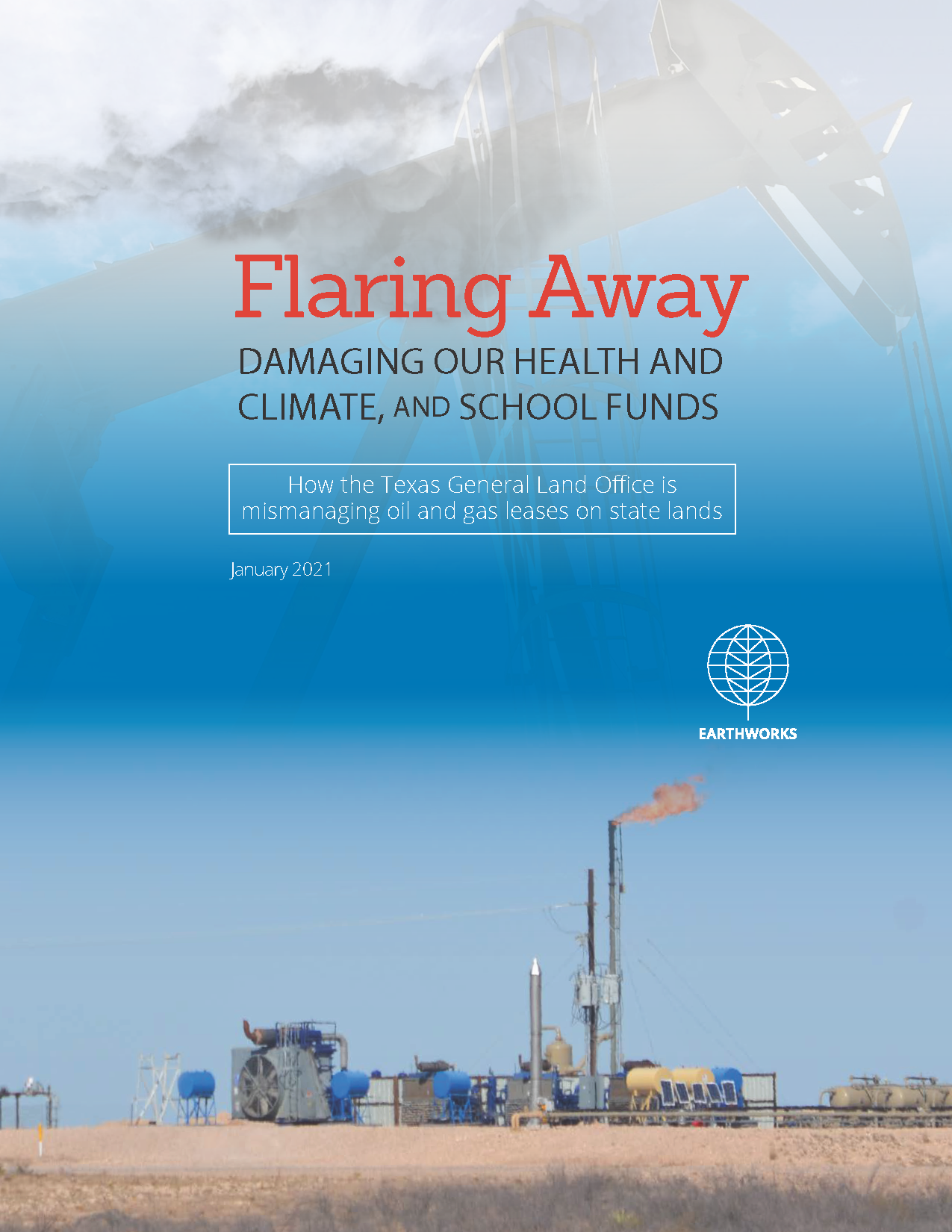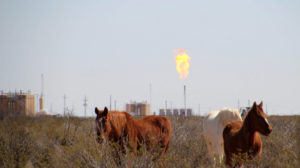Introduction
Flaring is on a rapid rise. The Texas Railroad Commission (RRC) permits flaring beyond well completion and initial start-up through the Rule 32 exception. Over the past 11 years the RRC has steadily issued more and more exceptions, from 107 in 2008 to 6,900 by 2019 — a 65X increase. According to Environmental Defense Fund (EDF), Texas now flares more gas than the entire state consumes each year.
As flaring has increased, so has pollution associated with the practice, and the prevalence of mismanaged flares. EDF estimates that 1 in 10 flares in the Permian Basin are malfunctioning, or unlit and venting. Because they aren’t fully combusting, unlit and malfunctioning flares release comparatively high levels of methane — a greenhouse gas 86 times worse for climate than carbon dioxide — as well as health-harming volatile organic compounds (VOCs) including benzene, a carcinogen.
The Texas Commission on Environmental Quality (TCEQ) is responsible for maintaining clean air in Texas, so flares that are malfunctioning, or unlit and venting are its responsibility. Unfortunately, as years of Earthworks’ research and fieldwork has demonstrated, 4 TCEQ’s oversight is inadequate, sometimes taking months to investigate complaints. Even after TCEQ inspects and issues violations, it doesn’t necessarily force the operator to change its flaring violations — Earthworks documented this at MDC Texas Operator’s Pickpocket 21, Primexx Meeker Canadian, and Primexx Red Unit.
Using documentation acquired from the RRC on the number of Rule 32 exceptions active and data captured by EDF during a series of flyovers throughout the Permian Basin, Earthworks was able to determine the number of flares in the EDF sample that were unpermitted. 75% of the operating flares documented by EDF on state lands were unpermitted.
While there is no record of the exact number of flare stacks on state lands there are 36,830 wells. Given that EDF’s sample of state lands was a random sample of active flares, this indicates that the actual number of unreported flares on state lands could be in the thousands.
Download the report (pdf)
For More Information
- Press release: Study: 75% of flares on Texas General Land Office lands (state public lands) are unpermitted
- Texas Railroad Commission flaring permit database (spreadsheet)
Your Support Makes Our Work Possible
Earthworks helps families on the front lines of mining, drilling, and fracking. We use sound science to expose health, environmental, economic, social, and cultural impacts of mining and energy extraction. To support our efforts, please consider a tax-deductible donation today that will go toward our work reforming government policies, improving corporate practices, influencing investment decisions, and encouraging responsible materials sourcing and consumption.


